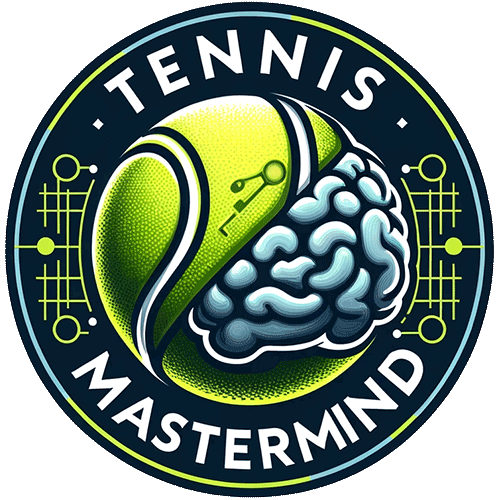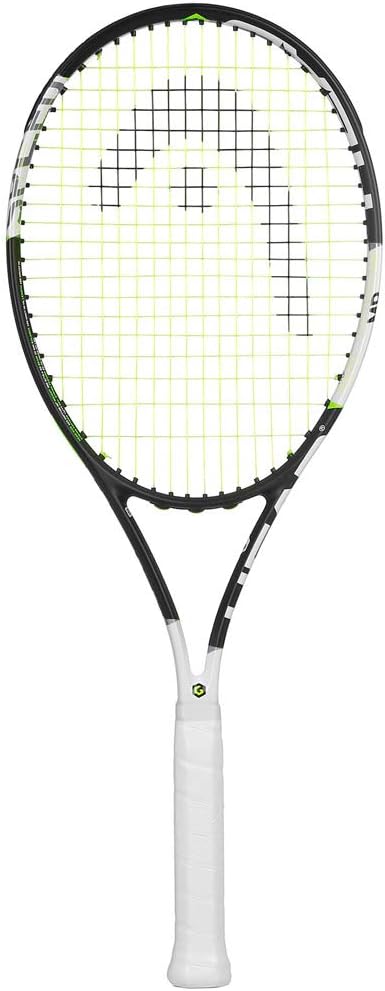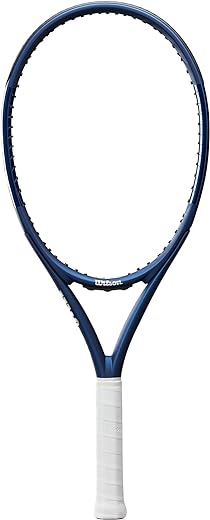Welcome, tennis enthusiasts! In this blog post, we dive into the intricate world of string tension and its impact on your tennis racket performance. As advanced players, we know the importance of fine-tuning every aspect of our game. Join us as we explore how string tension can make a difference in your game and help you unleash your full potential on the court. Let’s serve up some knowledge together!
Top Picks for Advanced Players
Understanding String Tension
When it comes to tennis rackets, one of the key factors that greatly affects performance is string tension. The string tension of a racket can impact various aspects of your game, including power, control, and comfort. Let’s delve into how string tension plays a crucial role in shaping your experience on the tennis court.
Power
- High String Tension: When the strings are strung tighter, the racket provides more power due to the trampoline effect upon impact. This is ideal for players who have a shorter swing and need help generating power.
- Low String Tension: Lower tension strings offer less power but provide more control. Players with longer, faster swings often prefer lower tension for better precision and placement.
Example: The Babolat Pure Drive with a string tension of 55-62 lbs provides a good balance of power and control for intermediate players.
Control
- High String Tension: Tighter strings result in increased control as the ball stays on the strings longer, allowing for precise shots and placement.
- Low String Tension: Lower tension provides a larger sweet spot and more forgiveness on off-center hits, but may sacrifice some control for players who rely on accuracy.
Example: The Wilson Blade 98 (16×19) strung at 50-55 lbs offers excellent control for advanced players seeking precision in their shots.
Comfort
- High String Tension: While tighter strings offer more control and power, they can also lead to increased shock and vibration, potentially causing discomfort or arm issues for some players.
- Low String Tension: Lower tension provides a softer feel on impact, reducing vibration and stress on the arm, promoting comfort during longer matches.
Example: The Head Graphene 360 Speed MP strung at 48-53 lbs prioritizes comfort with its lower tension, making it suitable for players prone to arm fatigue.
In conclusion, understanding the impact of string tension on a tennis racket is crucial for players looking to optimize their performance on the court. By considering factors such as power, control, and comfort, you can tailor your string setup to suit your playing style and enhance your overall game. Next time you restring your racket, be sure to experiment with different tensions to find the perfect balance for your game.
Effects of High String Tension
When it comes to tennis, the tension of your strings plays a crucial role in determining the overall performance of your game. High string tension can have both positive and negative effects on a player’s gameplay. Let’s delve into how high string tension can impact your tennis game.
Increased Control
One of the primary benefits of using high string tension is the increased control it offers players. With tighter strings, you can achieve more precision and accuracy in your shots. This enhanced control allows players to strategically place the ball exactly where they want it to go, giving them a competitive edge on the court.
- Example: Wilson Pro Staff RF97 Autograph is known for providing exceptional control due to its high string tension capabilities.
Potential for Less Power
While high string tension offers improved control, it can also result in reduced power generation during gameplay. Tighter strings absorb less energy upon impact, leading to a decrease in the power behind your shots. Players who rely on power-driven gameplay may find that high string tension limits their ability to hit powerful shots.
- Example: Head Graphene 360+ Speed Pro is a racket model that, with high string tension, focuses more on control than power.
Finding the Right Balance
Achieving the perfect balance between control and power is essential for maximizing your performance on the court. Players should consider their playing style and preferences when selecting the appropriate string tension for their racket. Experimenting with different tensions can help players find the ideal balance that suits their gameplay needs.
Key Takeaways:
- High string tension offers increased control and precision.
- Players may experience a reduction in power when using high string tension.
- Finding the right balance between control and power is crucial for optimizing gameplay.
By understanding the effects of high string tension on your tennis game, you can make informed decisions when selecting strings for your racket. Remember, the best string tension for you ultimately depends on your playing style and preferences.
Effects of Low String Tension
When it comes to tennis rackets, string tension plays a crucial role in determining the overall performance of the racket. In this blog post, we will delve into the effects of low string tension on tennis rackets, exploring the advantages and disadvantages that come with this setup.
Advantages of Low String Tension:
1. Increased Power:
- Low string tension allows the strings to flex more upon impact, resulting in a trampoline effect that generates more power.
- Players who prefer a more effortless power in their shots often opt for lower string tension.
2. Enhanced Comfort:
- With less tension in the strings, players experience a softer feel upon contact with the ball, reducing the risk of arm discomfort or injury.
- Brands like Wilson and Head offer tennis rackets specifically designed to maximize comfort with lower string tensions.
3. Larger Sweet Spot:
- Lower tension widens the sweet spot on the racket, making it more forgiving for off-center hits.
- Rackets like the Babolat Pure Drive 2021 are known for their low string tension capabilities that cater to players seeking a larger sweet spot.
Disadvantages of Low String Tension:
1. Reduced Control:
- While low tension provides more power, it sacrifices some control over the ball’s placement and direction.
- Players who rely on precision shots and placement might find low tension rackets challenging to maneuver effectively.
2. Decreased Spin Potential:
- Lower string tension limits the spin potential of the racket, as the strings are less able to grip the ball effectively.
- Models like the Yonex EZONE 98 showcase the balance between spin and control, suitable for players who require more consistency in their shots.
3. Faster String Wear:
- Due to the increased movement of the strings at lower tension, they are prone to wearing out faster than higher tension setups.
- Players who opt for low tension may need to restring their rackets more frequently to maintain optimal performance.
In conclusion, the choice between high and low string tension ultimately depends on your playing style and preferences. Experimenting with different tensions can help you find the perfect balance between power, control, and comfort to enhance your performance on the tennis court.
Tips for Determining the Optimal String Tension
When it comes to finding the right string tension for your tennis racket, there are a few key factors to consider. String tension can greatly impact your overall playstyle and performance on the court. Here are some tips to help you determine the optimal string tension for your playing style and preferences:
1. Consider Your Playing Style
- Power Players: If you have a more aggressive playstyle and rely on power shots, you may benefit from lower string tension. This allows for greater ball pocketing and increased power.
- Control Players: For players who prioritize control and precision in their shots, higher string tension may be more suitable. This provides better control over the ball and accuracy in your shots.
2. Experiment with Different Tensions
- String Tension Range: Most rackets have a recommended string tension range provided by the manufacturer. Start within this range and experiment with different tensions to see how it affects your play.
- Incremental Adjustments: Make small adjustments to the tension (e.g., +/- 2 lbs) and play a few practice matches to feel the difference in ball response and overall performance.
3. Take Your Preferences into Account
- Comfort vs. Control: Consider whether you prioritize comfort and feel or control and precision in your shots. Finding the right balance between these factors can help you determine the optimal tension.
- Feedback from Experience: Pay attention to how different tensions feel during play. Note any changes in your shot accuracy, power, and overall comfort level.
4. Seek Professional Advice
- Stringing Expert: Consult with a professional stringer who can provide guidance on the best string tension for your racket and playing style.
- Demo Programs: Take advantage of demo programs offered by tennis shops or manufacturers to try out rackets with different string tensions before making a final decision.
By following these tips and experimenting with different string tensions, you can find the optimal setup that enhances your performance and overall enjoyment on the court. Remember that finding the right string tension is a personal journey, so take the time to explore and fine-tune your setup for the best results.
Optimal string tension for peak performance
In conclusion, we have explored the crucial role of string tension in tennis rackets and its impact on player performance. We have learned how string tension affects power, control, and comfort in your game. Based on the factors discussed, we recommend that players carefully consider their playing style and preferences when choosing string tension for their tennis rackets. By finding the right balance, you can optimize your performance on the court and enhance your overall playing experience.
Advanced Player FAQs
How can advanced players experiment with different string tensions to find what works best for them?
To experiment with different string tensions, advanced players can start by gradually increasing or decreasing the tension of their strings and noting how it affects their play. They can try different tensions in small increments to assess the impact on their power, control, spin, and overall feel of the racquet. It’s important to give each tension setting a fair trial period to truly understand its effects. Additionally, seeking guidance from a professional stringer or coach can provide valuable insights into the best string tension for individual playing styles and preferences. Remember, finding the optimal string tension is a personal journey that may require some trial and error, but it can significantly enhance your performance on the court.
What role does the type of string play in conjunction with string tension for advanced players?
The type of string used by advanced players can significantly impact their playing experience. Different strings can affect the feel, control, power, and spin of the ball. Players may choose strings based on their material, gauge, tension, and construction to suit their playing style and preferences. String tension also plays a crucial role, as it can influence the player’s ability to generate power, control the ball, and feel the response from their shots. The relationship between string type and tension is essential for advanced players looking to optimize their performance on the court.
Are there specific tennis racket technologies or designs that work best with certain string tensions for advanced players?
Yes, there are specific tennis racket technologies and designs that work best with certain string tensions for advanced players. Advanced players typically have a higher skill level and require more precision and control in their shots. Rackets with tighter string tensions can provide more control and accuracy, while rackets with looser string tensions can offer more power and spin. It’s important for advanced players to consider their playing style and preferences when choosing the right string tension to complement their racket technology and design. Ultimately, finding the perfect combination of racket technology, design, and string tension can enhance an advanced player’s performance on the court.
How does string tension affect the performance of a tennis racket for advanced players?
String tension can significantly impact the performance of a tennis racket for advanced players. Higher string tension typically offers more control and precision but may reduce power and comfort. On the other hand, lower string tension can provide more power and comfort but may sacrifice some control. Advanced players often have specific preferences based on their playing style and technique. It is essential to find the right balance of string tension that suits your individual needs and maximizes your performance on the court.
How often should advanced players consider restringing their tennis rackets for optimal performance?
Advanced players should consider restringing their tennis rackets more frequently than recreational players. We recommend restringing your tennis racket every 10-15 hours of play to maintain optimal performance. This frequency helps ensure that the strings maintain their tension, which is crucial for advanced players looking to maximize control and power in their shots. Remember, regular restringing can also help prevent injuries and keep your game at its best.












6 thoughts on “String Tension and Tennis Rackets”
I found the explanation on how string tension affects control and power very informative.
Overall, a great read for anyone looking to improve their understanding of tennis racket setup.
I wish there was more detail on the specific string tensions used by professional tennis players.
I never realized the impact of string tension on comfort and feel until reading this article.
The comparison between low and high string tension was well explained and easy to understand.
It would be helpful to include recommendations on string tension for different playing styles.
Comments are closed.